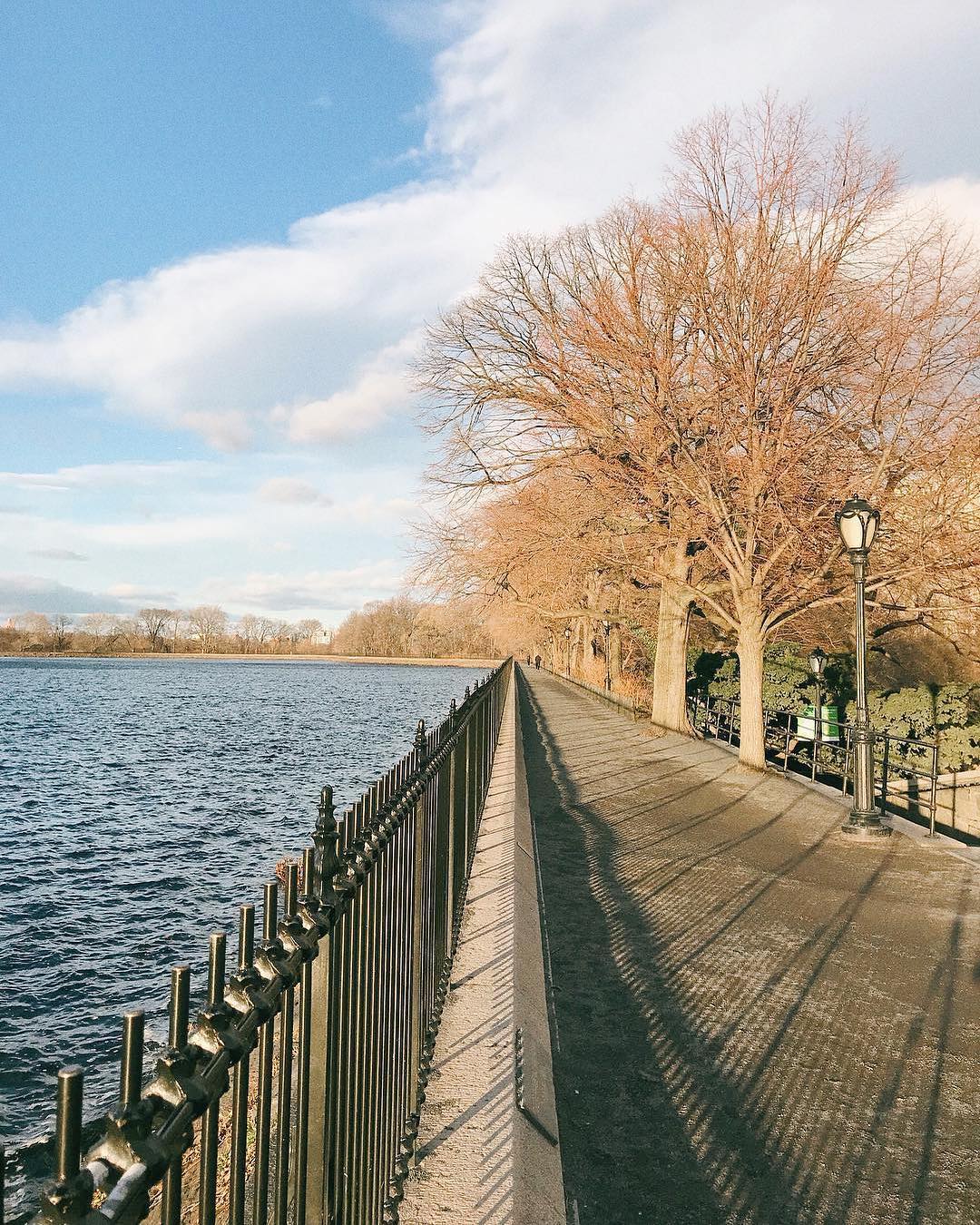As the country’s most visited urban park, Central Park welcomes tens of millions of visitors from around the world every year. Open to the public in 1857, Central Park was designed by landscape architects and designers Calvert Vaux and Frederick Law Olmsted—who earned the commission after winning a design competition.
Central Park is, quite literally, in the center of Manhattan: located between the Upper East and West sides, and 59th and 110 Streets. It encompasses 843 acres of rich biodiversity, with several bodies of water, hundreds of historical structures and statuary, dozens of bridges and archways, and hundreds of things to do and see—far too many to list here!
Here are just a few areas to explore on your next visit to Central Park:
The Lake in Central Park
For over 150 years, The Lake in Central Park and surrounding areas have provided a serene and relaxing respite from the bustling city. Originally a wild swamp, the lake was excavated in 1857 and transformed into an 18-acre tranquil body of water—the second largest in the park. Here are just some of sights and attractions on and around The Lake:
The Loeb Boathouse. In 1872, Calvert and Vaux designed a modest boathouse on The Lake to accommodate the popular attraction of row boating, eventually being replaced by a newer building which fell into disrepair in the 1950s. In 1957, the current structure—The Loeb Boathouse—was opened to the public.
The Loeb Boathouse is a multi-functional compound featuring a boat rental facility, a landmark lakeside restaurant, a seasonal terrace bar, and an express café.
Boating. Between 10am and dusk, rowboats are available for rent at The Loeb Boathouse. Rowing along The Lake affords boaters a rare appreciation and view of Central Park’s natural splendor. For a truly unique excursion, classic Venetian Gondola tours are offered when weather permits.
The Bethesda Terrace and Fountain. When Calvert and Vaux visualized this historic area along The Lake, nature was at the forefront. They wanted to create a public meeting place where nature could be fully appreciated and viewed.
The Bethesda Terrace is a magnificent two-story structure with an open-air promenade underneath, a band shell, two grand staircases—one of which leads to the Bethesda Fountain designed by Jacob Wrey Mould. The terrace and fountain were constructed during the Civil War, and are ornately designed and constructed with fabulous carvings, sculptures, and materials from around the world.
The Ramble
Just a short walk from The Bethesda Terrace is The Ramble—a 38-acre “wild garden,” conceived by Frederick Law Olmsted.
Visitors can enjoy nature up close and personal along The Ramble’s maze of walking trails and paths. Along with many woodland creatures, there are hundreds of bird species that live in The Ramble, making it a perfect spot for birdwatching. The Ramble’s trails are nestled among both indigenous and exotic trees and bushes, as well as a man-made stream.
Bridges and Arches of Central Park
There are 36 bridges and arches throughout Central Park. Built mainly of stone, brick, various rocks and cast-iron, these beautiful and functional structures span the waterways and walking paths of Central Park in grand style. Here are three of our favorites:
Bow Bridge. As the second-oldest cast iron bridge in America, the Bow Bridge spanning 60 feet over The Lake in Central Park is an iconic site. This beautiful, Classical Greek Refinement bridge (mimicking the bow of a violin or archer) connects the Cherry Hill section of the park with The Ramble. The lake, its seasonal flora, and classic architecture of surrounding neighborhoods make it a favorite spot for photograph and nature walks.
The Gapstow Bridge. The Gapstow Bridge offers spectacular views of Manhattan’s skyline in every season. This classic, gracefully-arched bridge made of metamorphic rock and cast-iron railings spans the Northern end of The Pond—a haven for hundreds of migratory birds and the Hallet Nature Sanctuary.
The Greywacke Arch. There are many arches throughout Central Park including the Greywacke Arch, designed by Calvert Vaux. Built in 1862 and renovated in the 1980s, this historic archway is named after its Graywacke sandstone from the Hudson River Valley. It’s ornamental Saracenic pointed arch is reminiscent of Spanish and Middle Eastern architecture.
Wollman Rink and Victorian Gardens
Since 1949, the Wollman Rink has been a favorite destination in Central Park. During the fall and winter months, visitors can ice skate surrounded by Manhattan’s fabulous skyline—both day and night. The rink also offers a skating school and is available for party rentals and ice hockey.
During the summer months, the area is transformed into Wollman Victorian Gardens Amusement Park with plenty of rides, attractions, food and family fun.
The Marmara Manhattan
Just steps away from Central Park’s Upper East Side is our sister hotel, The Marmara Manhattan.
With 109 deluxe suites, studios and guestrooms, The Marmara Manhattan offers the style, sophistication, hospitality, and world-class accommodations you expect from the Marmara brand—with abundant sunlight and space.
Whether you need lodging for a night or an extended stay, The Marmara Manhattan has everything you need (and want) from elegantly-furnished rooms, to in-room business facilities, to fully-equipped kitchens, to many guestroom balconies, Jacuzzi baths, and more. The Marmara Manhattan even welcome pets, and can accommodate your every need.
Being located in the heart of Manhattan’s Upper East Side, The Marmara Manhattan is not only a stone’s throw from Central Park, but other neighborhood attractions such as The Metropolitan Museum of Art, The Solomon R. Guggenheim Museum, Neu Gallery New York, and so much more.
Get a closer look at The Marmara Manhattan through their photo gallery.





